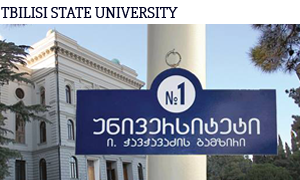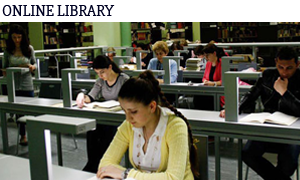
FACULTY OF ECONOMICS AND BUSINESS
The Experience of the State of South Carolina for the Development of Tourism in Georgia
The development of tourism is considered an utmost priority for Georgia, however its economic role has never been adequately evaluated. Prior to research such as that carried out by TSU scholar Professor Maia Margvelashvili, there had been no methodology to evaluate this process. Head of the Tourism Department at TSU, Dr. Margvelashvili, took the initiative of establishing a methodology. In 2011, Dr. Margvelashvili won a Fulbright Scholarship sponsored by the U.S. Department of State’s Bureau of Educational and Cultural Affairs to enable her to carry out research in the USA. During her stay at the University of South Carolina (Columbia) College of Hospitality, Retail and Sport Management, she worked on a project entitled Studies of the Methodology of the Economic Impact of Travel and Tourism. In addition to her research activities, Dr. Margvelashvili’s visit to the University of South Carolina had other positive outcomes such as plans to establish a joint MA program for 2014-2015, for student and staff exchange programs between the University of South Carolina and TSU.
The study of Georgian national tourism (2009-2011) and an attempt to evaluate its role in the country’s economic growth showed that, despite Georgia’s success in the ratings of the World Bank Group, Doing Business, the Georgian tourism sector does not look very promising or attractive at an international level. Because of the absence of indicators, experts of the World Travel and Tourism Council (WTTC) and Oxford Economics have not published information on Georgia’s travel and tourism in their annual Travel & Tourism Competitiveness Report at the World Economic Forum. Necessary indicators include the share of travel and tourism sectors in the country’s total GDP, growth measurements, and other parameters.
Today it is practically impossible to define the share of tourism in the national economy in Georgia since there has been no evaluation or analysis of the demand for tourism and travel, the economic contribution to the GDP and the employment field, capital investments, etc. Discussing the industry of national tourism using outdated methods – like counting the number of people crossing the border-- does not tell much, if anything at all, about the economic impact of tourism. No methodology was used to evaluate the economic parameters of travel and tourism: Inbound and outbound travel has been ignored; service exports and the balance of export and import in international tourism have all been treated in a similar manner.


The Tourism Satellite Account (TSA) recommended by the UN World Tourism Organization (UNWTO) as early as 2000 and already established in approximately 200 countries, is essential for calculating the economic data of travel and tourism. However it has never been applied in Georgia because tourism management failed to recognize its importance. All these issues motivated the research for a methodology to evaluate the economic impact of travel and tourism in Georgia.
A number of empirical studies have shown that tourism has a great potential to stimulate the country’s economic growth, diminish regional asymmetry, create jobs and embellish the image of Georgia abroad, which in the end has a favorable impact on other economic activities. Declaring tourism or any other field as the most important for the economy without prior knowledge of its economic impact is not the correct approach, however. For decision-making it is vital to carry out a thorough economic analysis to establish what the contribution of tourism is for the country’s and region’s economy. An economic impact analysis analyzes the relationships between economic sectors and identifies changes caused by various factors.
The State of South Carolina was chosen for field research because its size --the territory (80,8 km2) and population (4.6 million)--are close to Georgia’s. In South Carolina tourism is considered a priority for the state’s economic development and in 2001 it was one of the first states to endorse the Tourism Satellite Account. This state has a sound experience in using the latest methodologies to evaluate the economic impact of tourism. Research in South Carolina showed that a quick and easy method to evaluate the economic impact of tourism is based on defining touristic activities, costs and multipliers. This method is not costly and can be applied in several hours by a skilled analyst.
However, other methods are applied with greater accuracy. One provides initial information on visitors’ costs, and then compares the costs with the evaluations of the official economic model. The most common approach of regional economic models is the Input-Output (I-O Model). This mathematical model explains cash flows between sectors in the regional economy. Cash Flow Forecasting measures what each sector needs to purchase from other industries in order to produce goods worth one dollar. Applying the production function of each industry, the I-O Model also defines the volume of sales shares allotted to revenue and salaries, the owners’ income and taxes. Evaluating the recirculation of the costs in the region makes the calculation of multipliers from these models. Export and import is defined by evaluating the population’s and firms’ tendencies to purchase goods and services from local sources. The more the region is equipped with local goods and services, the higher the region’s multipliers.
According to this research, the State of South Carolina uses the Micro-Implan Recreation Economic Impact Estimation System (MI-REC/IMPLAN), which is a complete micro-computational system for evaluating the economic impact of recreation and tourism. It was created in 1992 by scholars Stynes and Propst at Michigan State University. The economic input of tourism for South Carolina is calculated according to the above-mentioned approach, and provides the following information: in 2010, the direct input of tourism into the state’s economy was $9,710 billion--3 % of the total economy--and the overall input (direct, indirect, induced) was $17,039 billion--6% of the total economy. In 2010 the number of persons employed directly within the tourism sector was 107,000, or 6% of the state’s total employment, while indirect or induced employment figures were at 160,000, or 9,2% of the state’s total employment.
The largest employers in the tourism sector are food and beverage services, which employed 54,000 people, or 51% of the total employment in tourism. Another 21,000 individuals were employed in the accommodation sector, or 19.7% of overall employment in tourism. Farming, or self-employment in the agricultural sector, was not included in the overall employment figures.
In 2010, $2,768 billion was allocated to salaries and revenue in the tourism sector while indirect, induced costs increase this amount to $4,912 billion. During this period, $1,174 billion went into the state budget in the form of tax revenues. The state’s Tourism Satellite Account usually provides the source of information for the purposes of economic analysis.
Adapting the methodology/system used in South Carolina will greatly contribute to the establishment of an accurate methodology for evaluating the economic impact of tourism in Georgia. For this reason, relevant recommendations were made during the research that can prove useful for the Georgian government. Recommendations include establishing economic parameters of tourism and travel, understanding the importance of an evaluation methodology for the country’s national economy, and if necessary, amending the development plans of economic policy and national tourism. This methodology will benefit the private sector as well as the national economy as a whole, since economic parameters play an essential role in investment decision-making.
Three Principal Recommendations:
1. Regulate Georgia’s tourism statistics to match modern standards and establish TourismSatellite Account.
2. Establish the I-O Model as the most potent current model for analyzing the economic impact of tourism. It would be preferable to adopt the system of MI-REC/IMPLAN operating in the USA.
3. Given the absence of data on the volume of Georgia’s domestic tourism and its economic impact, establish the Travel Economic Impact Model – TEIM-- to enable the Georgian government to evaluate the impact of the population’s touristic activities on the national and regional economies, and if necessary to amend the national tourism development plans. These recommendations should be implemented as soon as possible to ensure Georgia’s political stability and the integration of the Georgian tourism sector into the global economy, which is still recovering from the 2008-2012 recession.
During her stay in the USA, Dr. Margvelashvili established links with the University’s administration.,,Vice-president and the Provost – Dr. Michael Amiridis, the Deputy provost in international relations – Dr. Timothy Doupnik and the Head of the College of Hospitality, Retail and Sport Management - Dr. Brian J. Mihalik. As a result, a Declaration of Intent was signed between the College of Hospitality, Retail and Sport Management at the University of South Carolina and the Faculty of Economics and Business at TSU, to establish more academic cooperation. Currently, preparations are underway for signing a contract between the University of South Carolina and TSU to begin a joint MA program in 2014-2015 and to cooperate in research activities, students and staff exchange.
REFERENCES
Research outcomes were published in Economic Value of Domestic Travel and its Estimation Methodology (2011); Stages of Studying the Economic Impact of Tourism, and The Importance and Types of Analysis of the Economic Impact of Tourism (2012).




